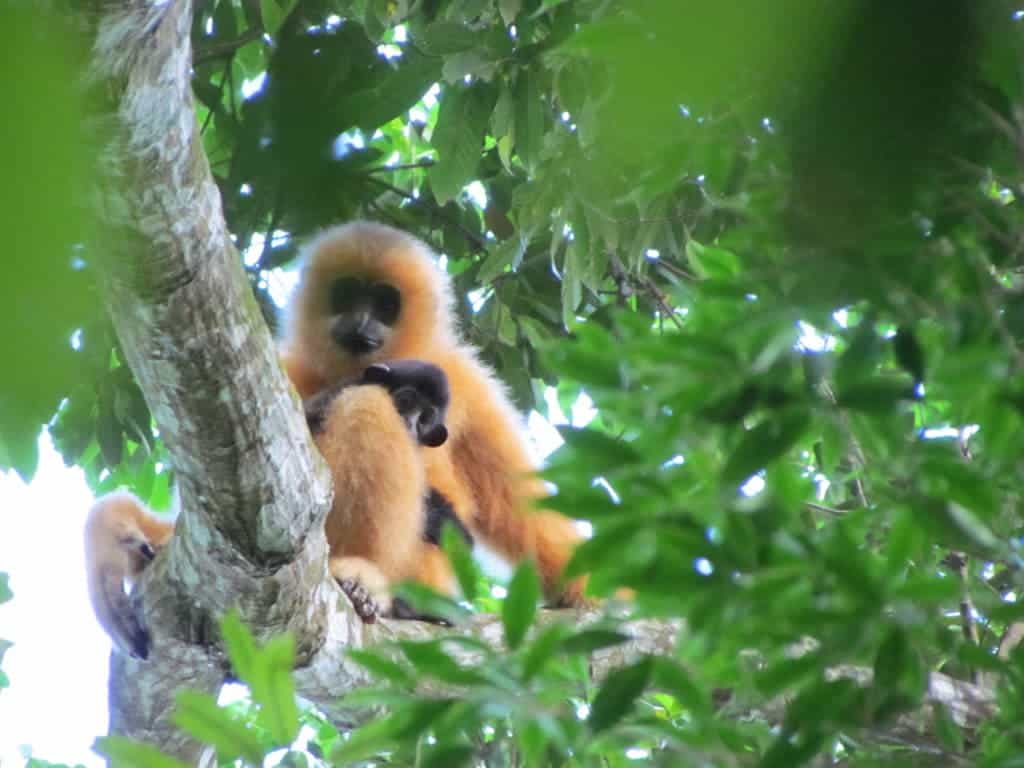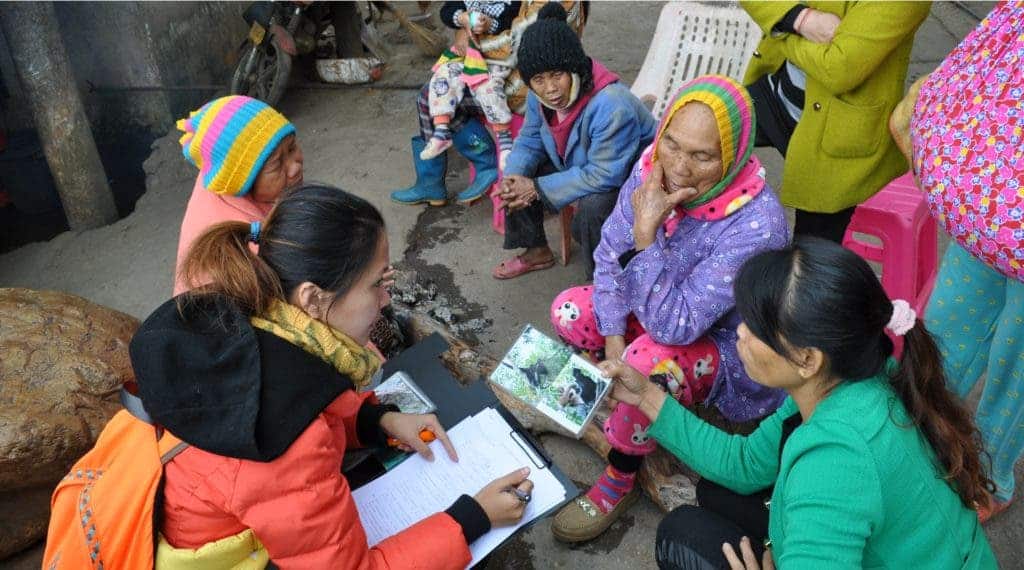The Hainan gibbon — what is perhaps the rarest mammal in the world — is not only disappearing from China’s forests but also from folklore.

Most of the world’s primate species are threatened with extinction, but for some this threat is far more immediate than for others. The Hainan gibbon is the world’s rarest ape, rarest primate, and quite possibly the rarest mammal species. It’s found only on one tropical island at the southern tip of China. Once numbering around 2,000 individuals in the 1950s, the Hainan gibbon underwent a severe decline due to habitat loss and hunting, with only an estimated 26 individuals remaining. Today, these apes are restricted to just two square kilometers of remnant rainforest in Bawangling National Nature Reserve on Hainan Island in the South China Sea.
Gibbons are small apes that live in the forests and can swing from tree to tree with remarkable dexterity and speed. Chinese culture has always cherished them, lending them an important place in Chinese folklore, particularly in the southern province of Hainan Island.
Unfortunately, not only is the Hainan gibbon (Nomascus hainanus) on the brink of extinction, its cultural existence is also eroding away, according to researchers working with the international conservation charity ZSL (Zoological Society of London).
The researchers, led by Dr. Samuel Turveys from ZSL’s Institute of Zoology, conducted ethnographic interviews with locals across the Hainan gibbon’s historical range. The survey was meant to measure the locals’ “traditional ecological knowledge” — a sort of cultural wisdom about wildlife passed from generation to generation.
“In an era of satellite imaging and GPS-tracking, using ethnographic surveys for conservation science might seem esoteric. However, there is an urgent need to understand the relationship between threatened species and local communities, and traditional folklore can often provide invaluable insights to inform future conservation strategies,” Turveys said in a statement.

People who live in regions of Hainan where the gibbons used to live until very recently were still aware of the apes’ cultural significance. However, elsewhere, these animals are becoming increasingly forgotten. Disturbingly, any local communities who are now unaware of Hainan gibbon folklore still retain knowledge of how to hunt gibbons, even in areas where they had disappeared decades ago.
“Folklore and stories give us a connection to our natural world, no matter where we live. And many animals regularly feature in the news or on nature documentaries or in books. As the range of the Hainan gibbon has shrunk, the number of people encountering this enigmatic animal has decreased, so the frequency with which people recall them in stories also decreases,” Dr. Susan M Cheyne, Vice-Chair of IUCN’s Primate Specialist Group Section on Small Apes, told ZME Science.
“Myths, legends, and fables about animals are often the first encounter many people have with an animal, even if they may never see it in the wild. Keeping these stories alive ensures we maintain a link between people and animals, this is especially important for the Critically Endangered Hainan gibbon,” she added.
Whether we like or not, culture plays a major role in conservation efforts. For instance, people are far more inclined to take action by donating or supporting conservation efforts when a species they’re very culturally familiar with is threatened, even if they’ve never seen that animal in person in their lives. Think of lions, giraffes, and elephants. Bearing all of this in mind, conservation efforts shouldn’t ignore the cultural significance of a species — it might make all the difference.
“Ethnographic research is becoming increasingly recognized as important for primate conservation. If you know about something, you are more likely to have empathy and to therefore care about the fate of the animal. Loss of wildlife and habitat often goes hand in hand with the erosion of local cultures and traditions. Some options would be to curate a museum of stories about the Hainan gibbon, compile all the tales into a book and ensure that culture plays a role in conservation education and outreach,” Cheyne said.
“Our human culture is often linked to wildlife, no matter where we live, so we should all celebrate the stories we have. We often will have read fables and stories about animals as children, we need to keep these alive,” she concluded.
The findings appeared in the journal Open Science.


